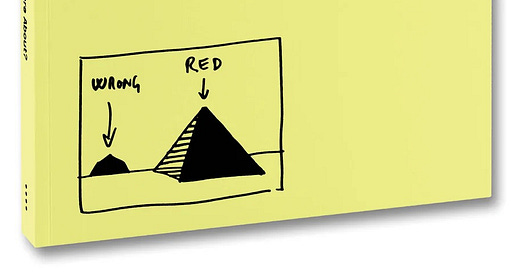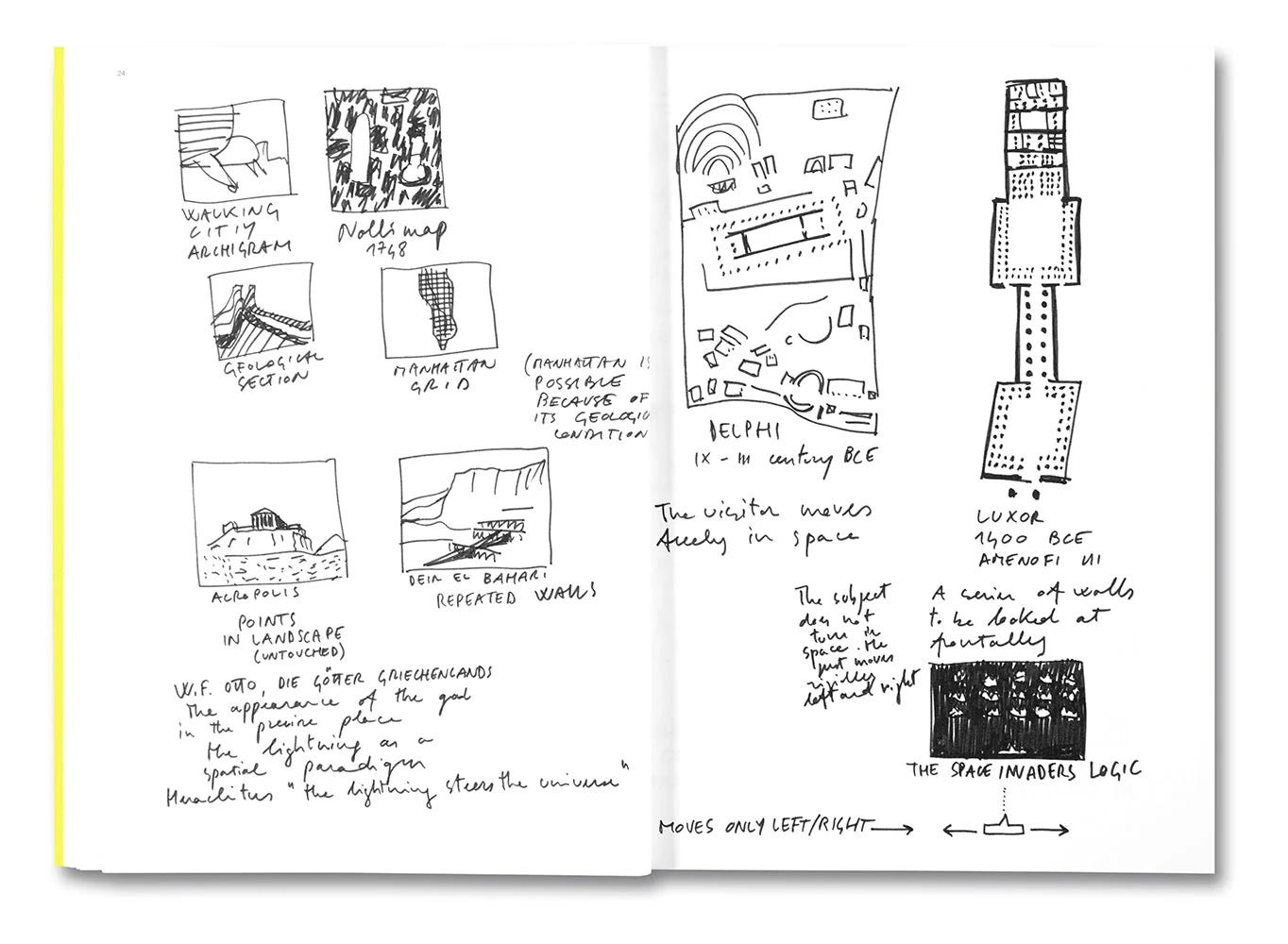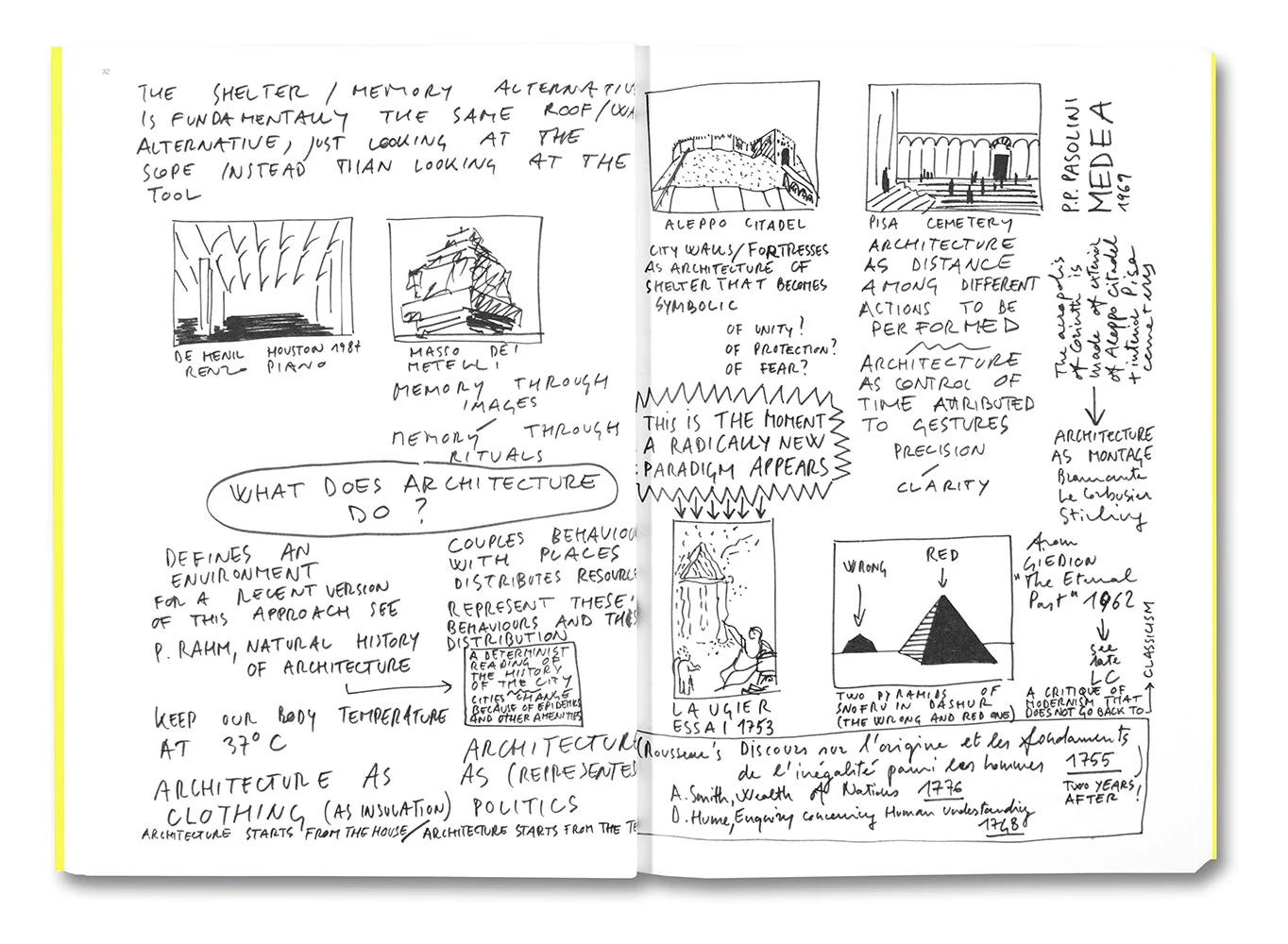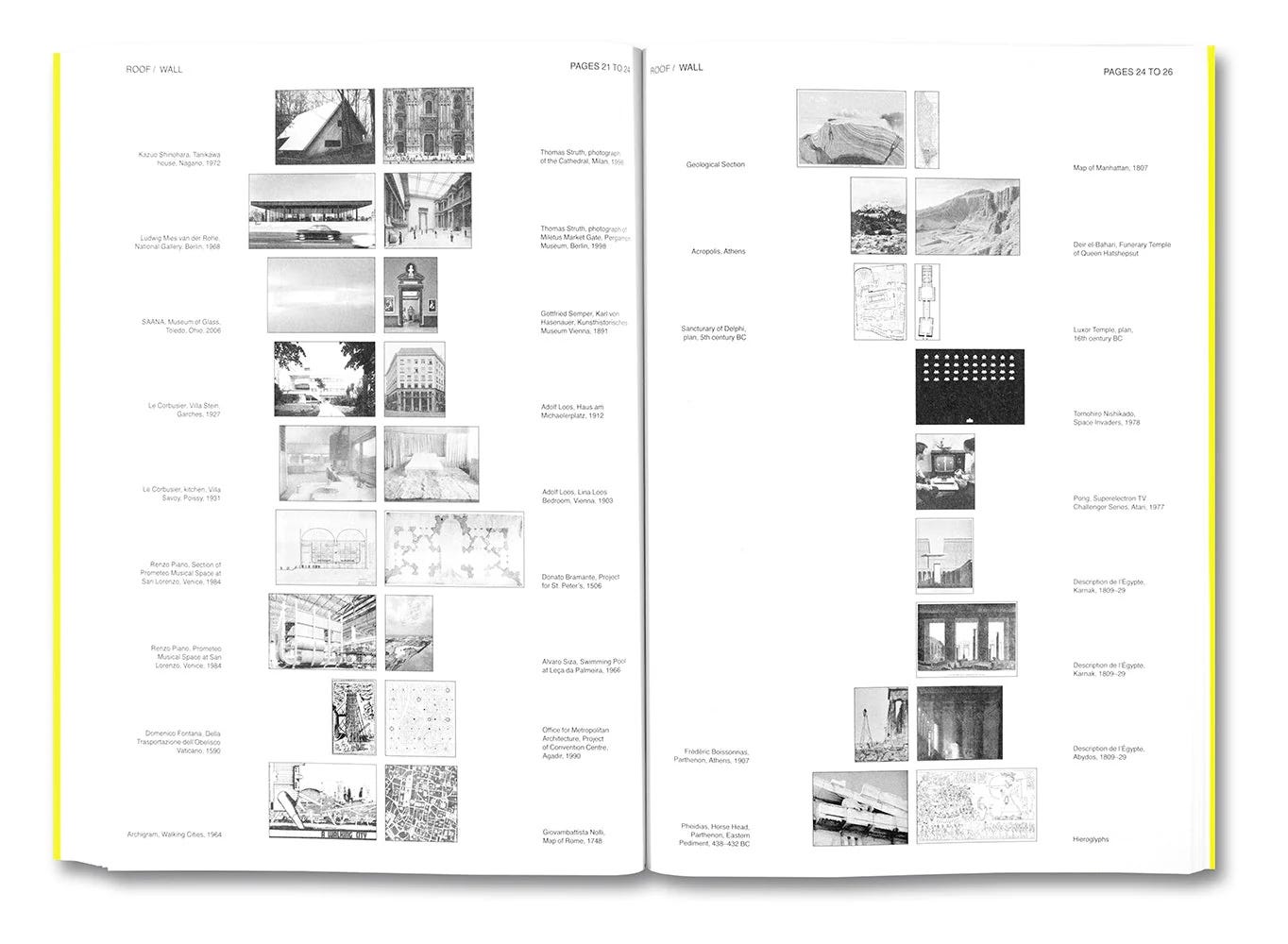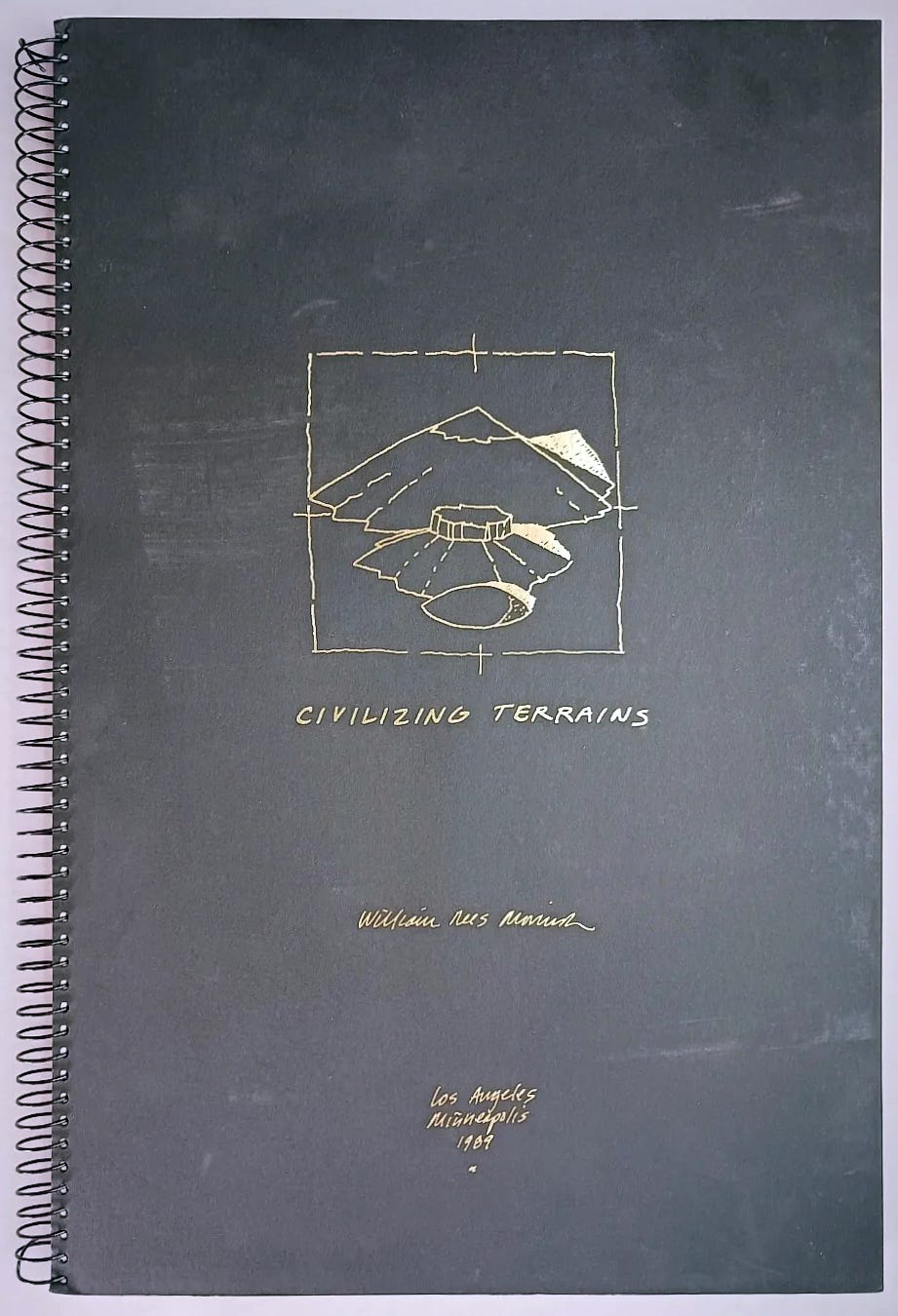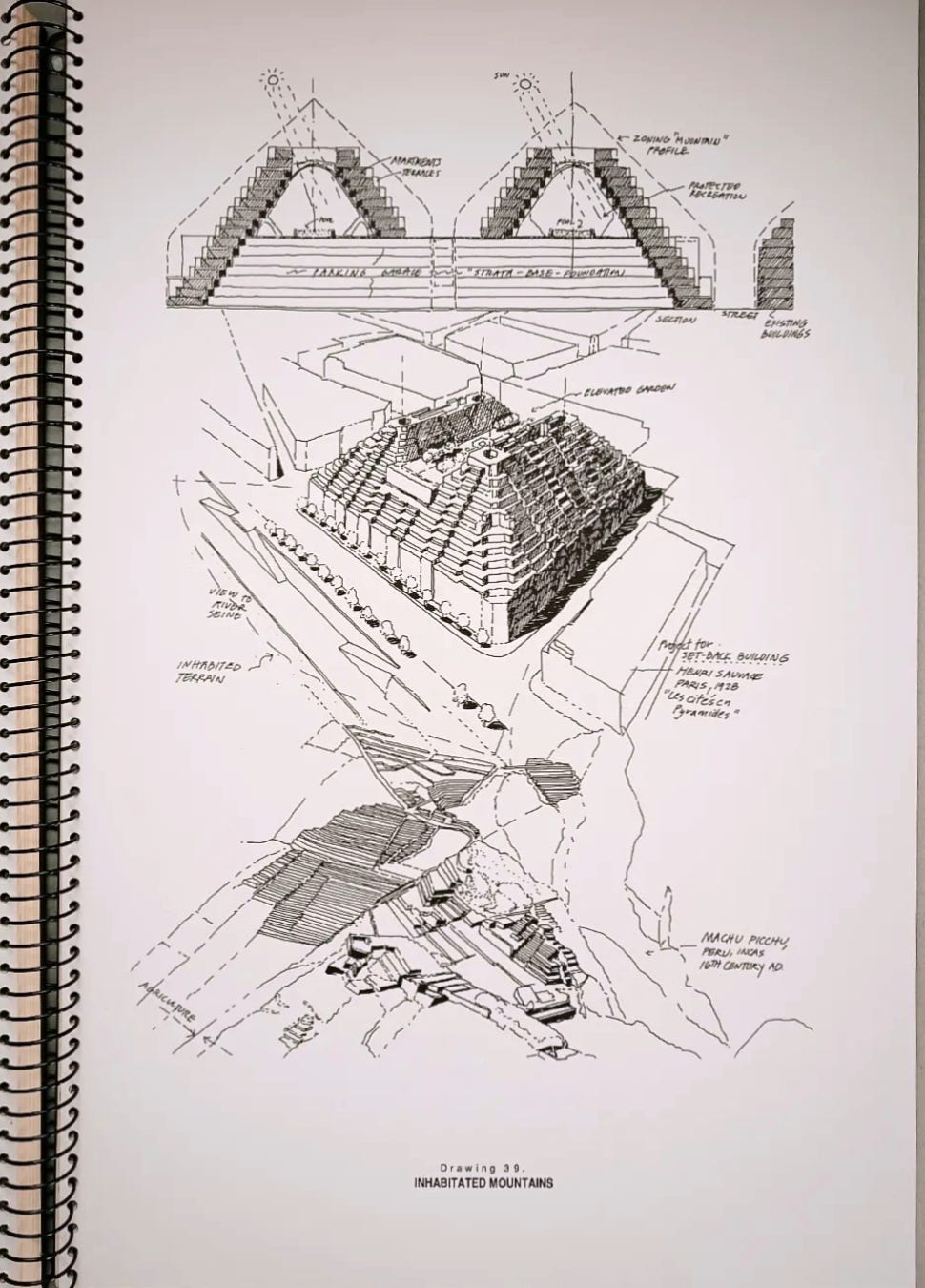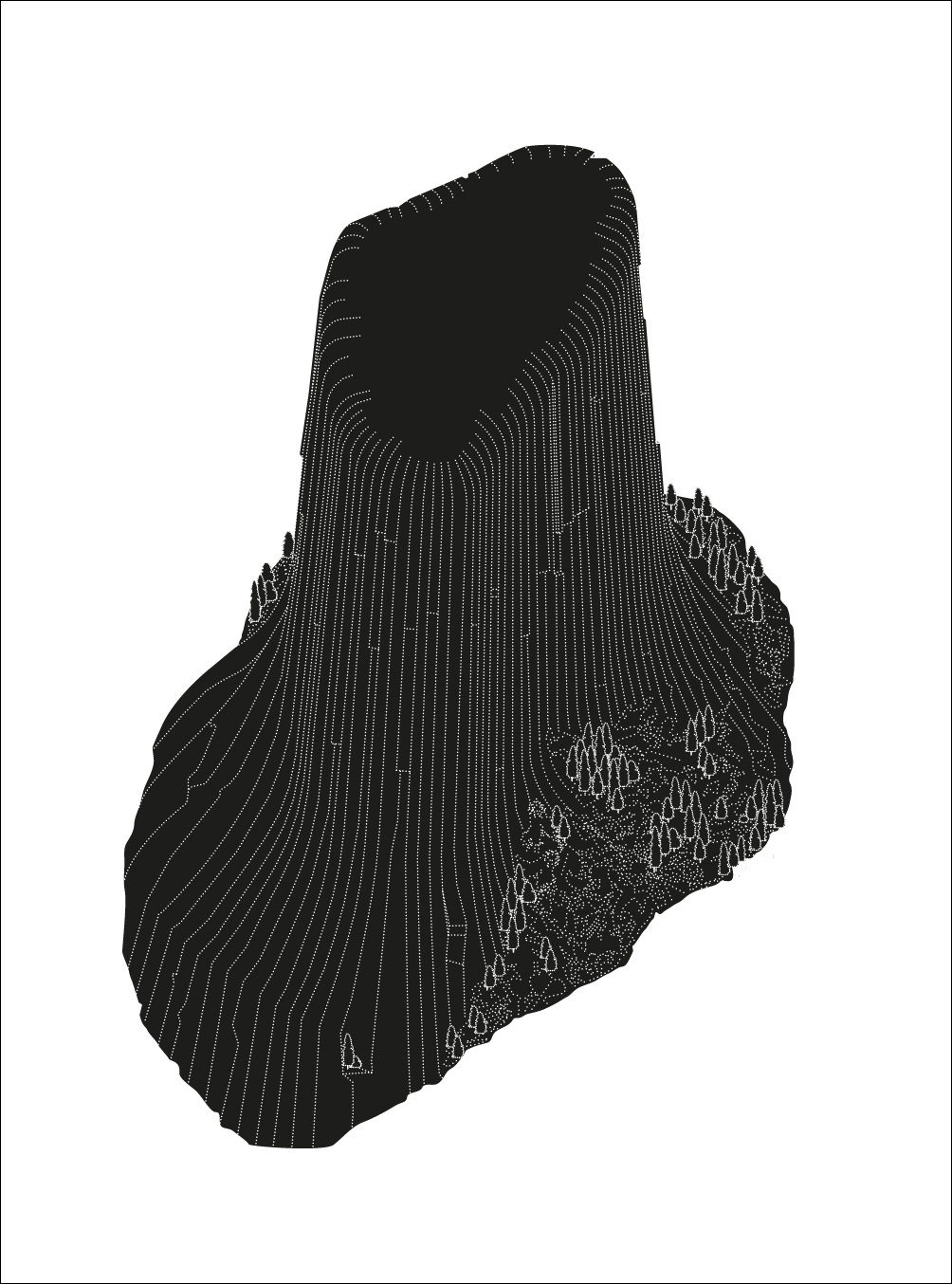It’s the end of the school year, so what better time to dig into a book about an introductory architecture course. I’m referring to Grundkurs: What is Architecture About? by Pier Paolo Tamburelli, a collection of his notes and sketches for class lectures — lectures we’ll never hear. I dug a couple of related books out of the archive and also compiled some of the usual new books and headlines.
Book of the Week:
Grundkurs: What is Architecture About? by Pier Paolo Tamburelli, published by MACK Books (Buy from Amazon)
Architecture books that are based on lectures or are full-blown transcripts of them have been fairly common over the last hundred or so years. An example of the first is Sigfried Giedion’s Space, Time and Architecture, first published in 1941, which followed from the Charles Eliot Norton Lectures the Swiss historian gave at Harvard in 1938 and 1939. Transcriptions of lectures include, among many others, Frank Lloyd Wright’s Modern Architecture: Being the Kahn Lectures for 1930, reprinted in 2008, and, more recently, Rem Koolhaas’s Preservation Is Overtaking Us, the first in Columbia’s GSAPP Transcripts series. Other series, such as Taubman College’s Michigan Architecture Papers, signal how the effort architects expend on preparing lectures for universities make them suitable subjects for publications. The same cannot necessarily be said for lecture notes — the preparatory texts, sketches, and doodles used to formulate lectures — as Grundkurs: What is Architecture About? is the first instance I can find of such a book.
Grundkurs, which translates from German as “basic course,” is the introductory architecture class that Italian architect and editor Pier Paolo Tamburelli gave at the Technical University of Vienna in 2021. The first-year, first-semester course consisted of eight lectures that asked the students the fundamental question: “What is architecture about?” Tamburelli approached the lectures as “rather open-ended and deliberately non-exhaustive,” he writes in the book’s brief introduction, further explaining that he structured the eight lessons as “eight sets of alternatives that I believe expose some of the fundamental problems of contemporary architecture.” Among them are Shelter / Memory, Figure / Ground, and Eclecticism / Classicism. The book follows the eight-part structure, displaying his notes (mostly, but not always, in English) and sketches for the (usually) pairs of images he would display at the front of the lecture hall (thumbnails of those photographs and drawings are included in the back of the book, per the spread below). Although the Grundkurs Tamburelli taught descended from the course given by Rob Krier decades ago, the image pairs recall the lectures given by Giedion as well as those at Yale by Vincent Scully, who wielded dual slide projectors to explore complementary images and ideas.
With 175 pages of sketches and notes, as in the two spreads above, Grundkurs is hardly a straightforward book to be read cover to cover. The notes are cryptic at times, especially for people who have not lived through architecture school, but given the illustration of the “wrong” and “red” Dahshur Pyramids in Egypt, readers are given a slight warning. Tamburelli’s introduction further serves to assuage confusion over his notes and the “ugly, punk tone” of his drawings, while addressing potential critics of the book. For example, he writes that some of his notes are “unfathomable” even to him, including the statement that “Devils Tower becomes architecture because it is precisely chosen by the aliens.” (See the bottom of this newsletter for more Devils Tower.)
Grundkurs is like taking a peek inside someone’s brain without an instruction manual, but for every perplexing page there is an illuminating one. For me, an example of the latter comes in the Eclecticism / Classicism lesson, when Tamburelli looks at the Public Library in Groningen designed by Giorgio Grassi in 1989, not a building I was familiar with beforehand but find appealing after a little bit of digging spurred by the book. Inserted between existing buildings on an awkward flag lot, the library “disappears in its context,” he writes, “emerging simply as a sort of commentary on the existing city.” Tamburelli pairs it with Grassi’s earlier Trieste Regional Headquarters (1974), stating that the office building in Italy takes a critical stance toward the city but the Dutch library is “nostalgic for a pre-modern era.” Such statements beg for further articulation and explication — but that is something we would only have gotten sitting in the Grundkurs lecture hall.
Books Released This Week:
(In the United States, a curated list)
Architecture Is Education: Global Award for Sustainable Architecture and Architecture Is Experimentation: Global Award for Sustainable Architecture, both edited by Jana Revedin & Marie-Hélène Contal and published by ArchiTangle (Buy Education from Amazon / Bookshop; Buy Experimentation from Amazon / Bookshop) — A pair of books on The Global Award for Sustainable Architecture, which was created in 2006 and is under the patronage of UNESCO, respectively about “how architectural education is a vital force in addressing global sustainability challenges” and “how architectural practice can lead to significant social, economic, and environmental progress.”
Architecture of Commonality: Grounds for Hope edited by Tomà Berlanda, published by ArchiTangle (Buy from Amazon / Bookshop) — Documentation of the Palestinian Museum in Birzeit, West Bank, one of the winners of the 2019 Aga Khan Award for Architecture, accompanied by essays on the role of museums and cultural institutions in Palestine and the Arab world. The book follows the format of Hutong Metabolism: ZAO/standardarchitecture, the 2021 book celebrating a winner of the 2016 Aga Khan Award for Architecture.
Innovations in Mass Timber: Sequestering Carbon With Style In Nonresidential Buildings by Boyce Thompson, published by Schiffer Publishing (Buy from Amazon / Bookshop) — A “global tour of 16 of the most innovative and stylish projects made with mass timber” that starts and ends with buildings designed by Japanese architects working overseas: Shigeru Ban's Swatch Headquarters in Switzerland and Kengo Kuma’s H.C.Andersen Hus Museum in Denmark.
Full disclosure: As an Amazon Associate, AbeBooks Affiliate, and Bookshop.org Affiliate, I earn commissions from qualifying purchases made via any relevant links above and below.
Book News:
What were the most significant architectural theory texts published between 2008 and 2024? The Architecture Exchange is soliciting nominations for just that, for “up to five texts (including your own if you wish).” Due date is June 15, 2024.
“Is Mass Timber the Key Element in a Low Carbon Future?” — Mark Alan Hewitt reviews Boyce Thompson’s Innovations in Mass Timber for Common Edge, saying it “documents a wide range of interesting projects with enough detail to whet one’s appetite for more.”
Katherine Zubovich, associate professor of history at SUNY Buffalo, goes on the American Prestige podcast to talk about her new book Moscow Monumental: Soviet Skyscrapers and Urban Life in Stalin's Capital:
From the Archives:
Last November, I found a first edition of Civilizing Terrains: Mountains, Mounds and Mesas by William Rees Morrish and posted a few photographs of it to Instagram. I’m putting it in this week’s newsletter because, like Grundkurs, the 1989 book has an atypical format: 49 drawings on large sheets that are, as Morrish describes in the introduction, “an abbreviated story concerning the role that the sacred mountain has had upon our formal and spatial thinking.” It is a critique of how the American landscape has been treated more as a resource than a holy ground: “Hopefully we can find ways to stop living at right angles to the land.” And while Morrish begins his book with a quote about religion, Civilizing Terrains is “cosmic” in the broad sense of the term, not the view that America is a Christian land, as some see it today.
Like Grundkurs, Morrish’s book is not read like a typical book. Each drawing on the recto page is accompanied, on the verso page, by a brief description of the drawing and A-to-Z “Geo-Facts” definitions. The subjects of his drawings are varied, from ziggurats and Indian mounds to ancient architecture and (then) contemporary buildings. So Devils Tower makes an appearance in drawing 36, “Cosmic Earth Monuments,” alongside Antoine Predock’s Nelson Fine Arts Center and American Heritage Center (the two projects of his I focused on in a recent newsletter). Although William Stout put out a small 5-3/4” x 9-1/4” paperback in 1996, which can be found inexpensively today, it doesn’t do justice to the drawings as they are displayed in the tabloid-size, spiral-bound original.
In addition to minor roles in Grundkurs and Civilizing Terrains, Devils Tower is the star of What's Wrong with the Primitive Hut?, the eighth, winter 2013 issue of San Rocco, the now-defunct architecture magazine that was founded by a group of Italian architects, including Pier Paolo Tamburelli, launched in 2010 with issue 0, Innocence, and wrapped up in 2019 with issue 15, Muerte (Death). Each now-hard-to-find issue featured a stylized white-line-on-black-background drawing of something, usually a building, but in this case Devils Tower, the subject of Stefano Graziani’s contribution, “Some Footnotes to Devils Tower.” Graziani writes that Devils Tower is “first and foremost a Native American holy place” but chooses to “footnote” it with an excerpt from the Close Encounters of the Third Kind screenplay and photographs of the natural monument, the latter capturing the assertion that “in San Rocco, pictures are more important than texts.”
Thank you for subscribing to A Weekly Dose of Architecture Books. If you have any comments or questions, or if you have your own book that you want to see in this newsletter, please respond to this email, or comment below if you’re reading this online. All content is freely available, but paid subscriptions that enable this newsletter to continue are welcome — thank you!
— John Hill

